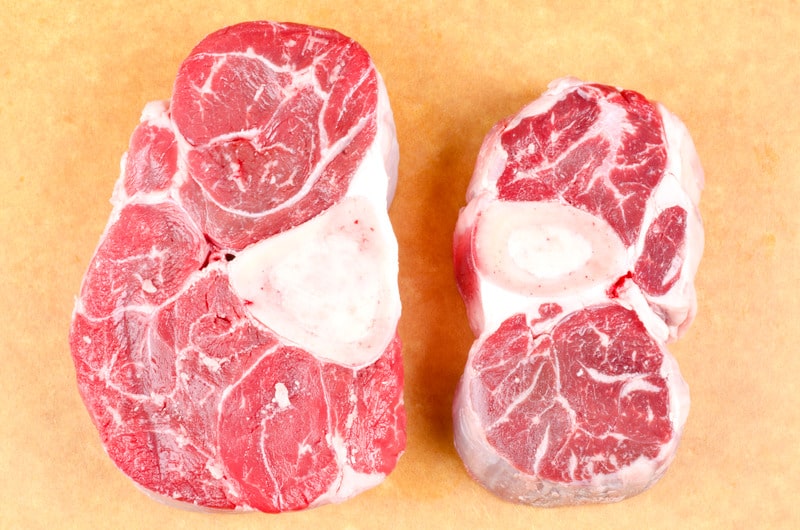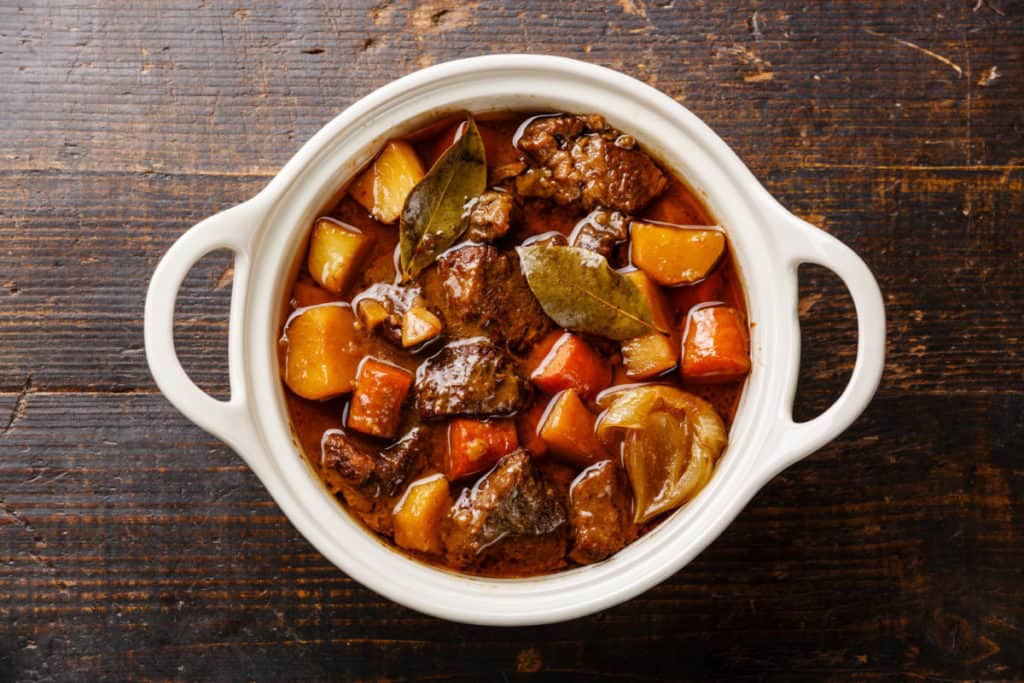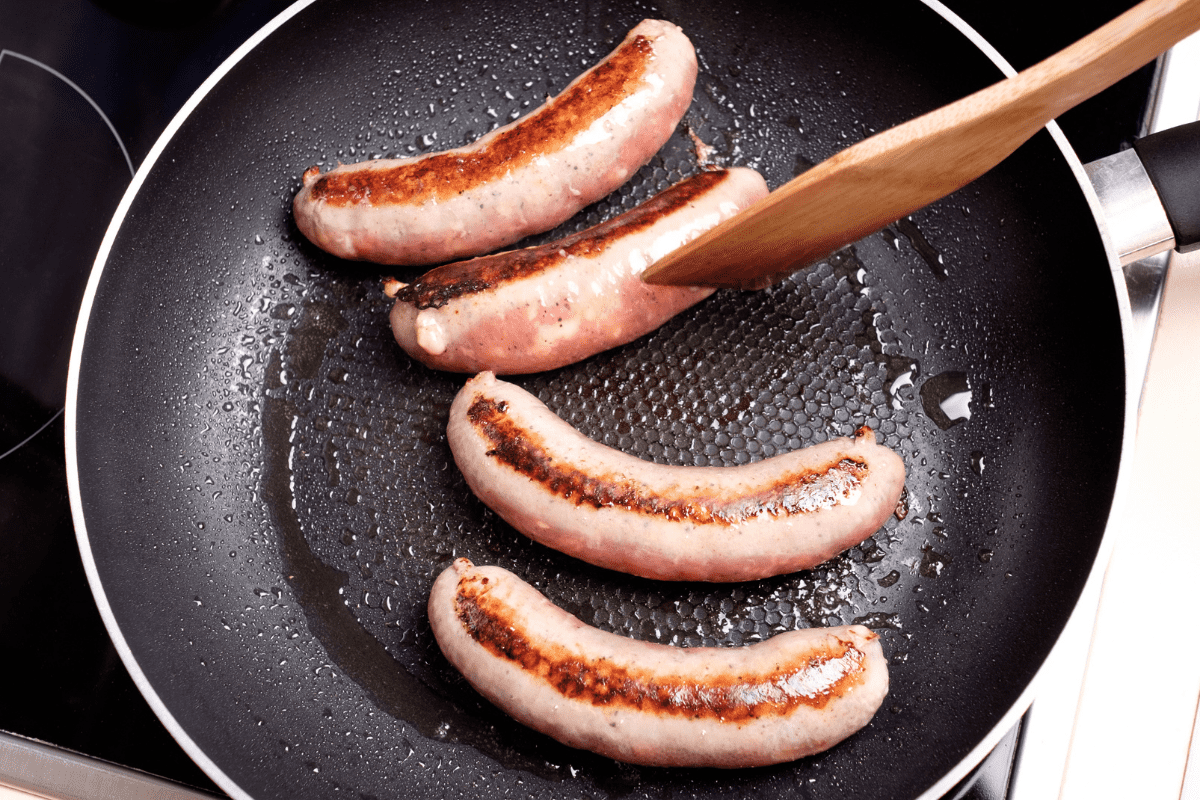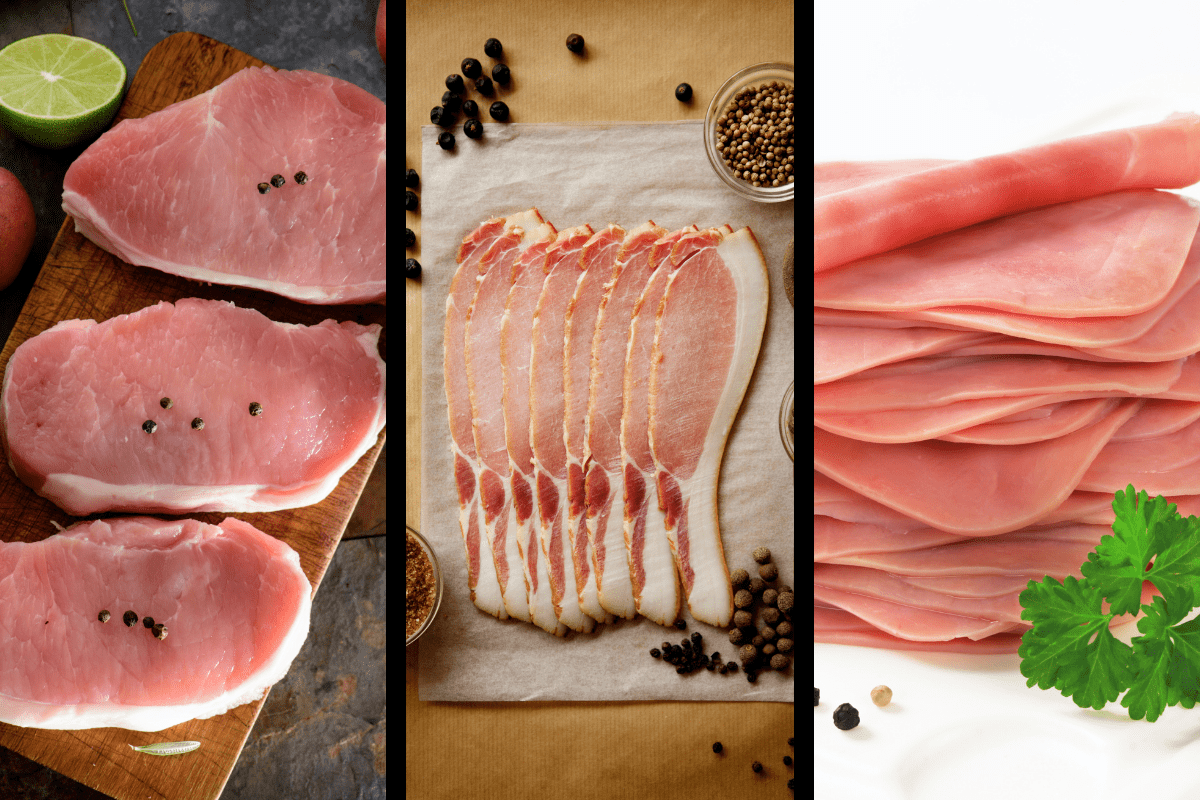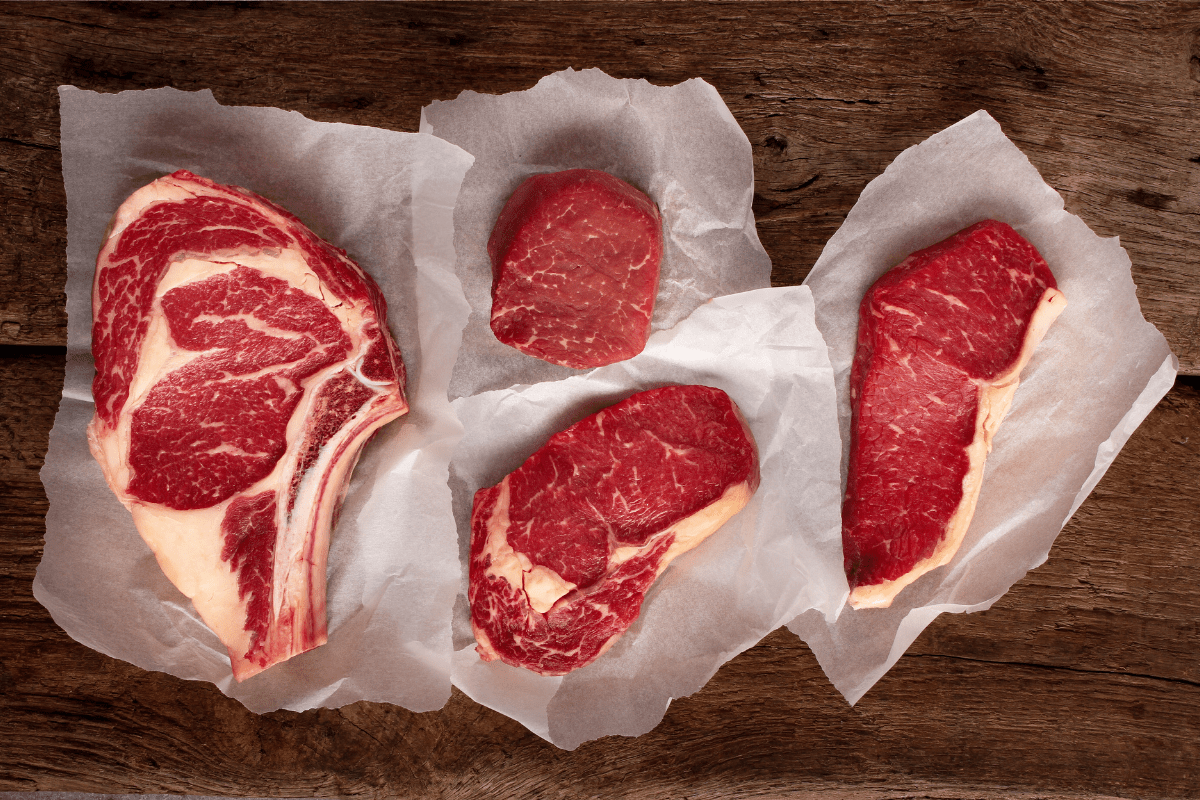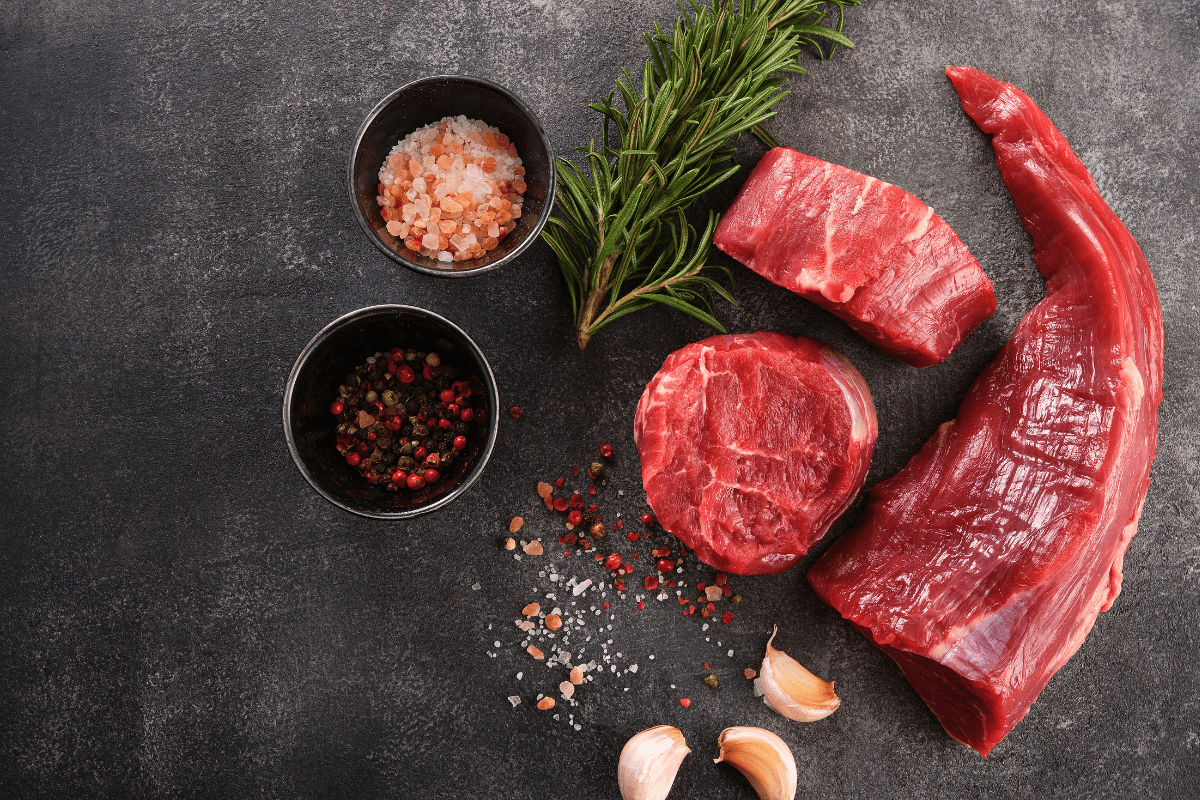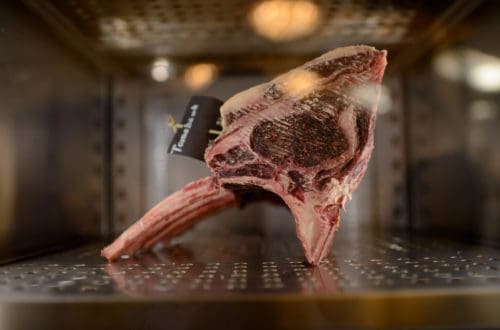There is nothing worse than smelling a beautiful hearty stew cooking all day, only to find the meat tough, dry and tasteless when you come to eat it.
So why does stewing beef get dry, tough and tasteless? To ensure that you have a stew that contains fork tender, tasty chunks of stewing beef, you have to use selected cuts of meat that contain fat marbling, and will break down during the long cooking process. Lean, prime cuts of beef may look tempting, but will result in a poor eating stew.
This article will explain the best cuts to use to ensure an tasty and tender stew, and the beef cuts to avoid.
Why Your Stewing Beef Is Tough, Dry & Tasteless
There are five main reasons why your stew did not turn out to be the succulent and tasty dish that you were hoping for. We will look at those five reasons below and then will talk later about the cuts of beef that you should be buying to ensure you have tender and tasty chunks of beef every time.
The Top 5 Mistakes Made When Cooking Stewing Beef
- Beef Is Too Lean
- Using The Wrong Cut of Beef
- Not Browning or Seasoning the Beef
- Not Enough Cooking Liquid
- Not Cooking Beef For Long Enough
Here is a more in depth look at each of these mistakes people make when cooking stewing beef.
The Beef Is Too Lean
One of the biggest mistakes when choosing beef for a stew or casserole, is picking a beef cut that is too lean.
Although we have been conditioned to believe that leaner is better, this is not the case when it comes to stewing beef.
The beef you choose should come mainly from the fore quarter of the animal, such as the chuck, shoulder or brisket. Much of the outer fat layer should be trimmed away, however a nice marbling of fat should run through the meat.
The fat within the meat is what will provide the rich flavor, and much of it will cook out during the slow cooking process to help break the beef down into tender pieces.
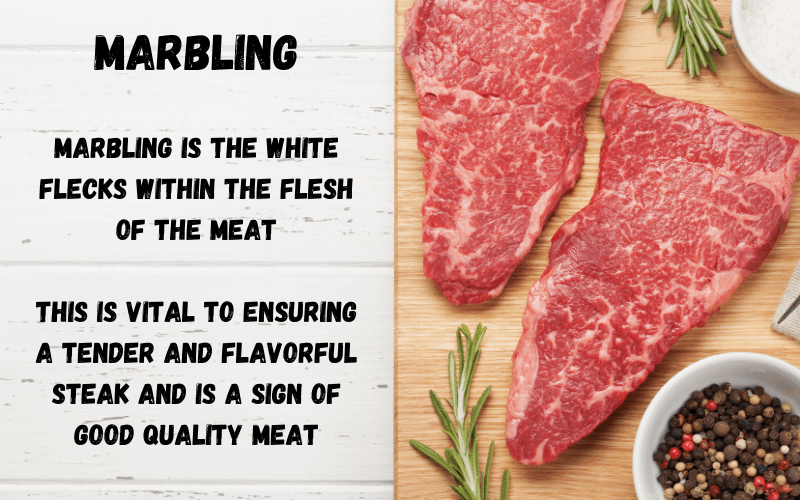
The Beef Is Too Good
As mentioned earlier, the best cuts of beef to use for a stew or casserole are taken from the less desirable, cheaper cuts of meat.
Prime cuts such as steak, rib or hind quarter cuts, may look nice and lean, however it is that leanness that will be the downfall of your meal.
These prime cuts are better cooked quickly and served rare – medium. Long cooking just makes the beef tough, and without the fat, it is also tasteless.
Not Seasoning or Browning The Beef
One step of the cooking process that many people leave out when cooking stewing beef is the ‘browning’ and seasoning process.
It cannot be stated highly enough just how much this step adds to the flavor and succulence of your meal.
Seasoning the beef and then frying in a hot pan will form a crust around the beef that will sear in the natural juices of the meat.
Some people like to coat the beef with seasoned flour before browning as this will help to thicken the gravy of the stew. Either way is fine and down to your personal preference.
Here is a video on how to brown stewing beef
Not Enough Cooking Liquid
One thing that you must ensure when cooking stewing beef, is that the meat remains covered in liquid.
There are many different liquids that people use to flavor their stews, water, gravy, stock, beer etc, but whatever liquid you use, you must make sure that it doesn’t run dry and expose the meat directly to the heat.
As you can imagine, the liquid plays a big part in making sure the beef remains moist during the cooking process.
If the liquid level evaporates to a point where the beef is no longer covered, then the heat will begin to dry out and toughen the meat.
Not Cooking The Beef Long Enough
The final reason that you may end up with tough beef in your stew is down to NOT cooking the beef for long enough.
When using the tougher cuts of beef that have the most flavor, they need to be simmered for a long time to give the beef chance to break down the tough muscle fibres.
If you try to hurry the process, the meat will still be tough and you will need to rely on chewing the meat to break down those muscle fibres.
So do yourself a favor and allow enough time to thoroughly slow cook the beef and let the cooking process do the hard work for you so that you can enjoy succulent tender beef chunks.
Best Cuts Of Beef For Stewing or Casserole
So now that we have looked at how the cooking process can ruin a good stew, lets look at how using the wrong cut of meat can do the same.
Using the right cut of meat will make a huge difference in how tasty and tender it is once cooked in your stew or casserole.
As mentioned earlier, using the tougher cuts of meat that carry some internal fat marbling are the best cuts to ensure good results every time.

The best cuts of beef to use for Stews and Casseroles:
- Beef Chuck Steak
- Beef Shoulder Blade Steak
- Beef Neck
- Beef Brisket
- Beef Shank/Shin
All of the above cuts of beef are taken from the fore Quarter (front) of the animal. The shoulder and shin of the animal.
As you can imagine, these muscles get a lot of workout lifting the big heay head of the animal as it lowers and raises its head to eat. That makes the muscles tough, but also adds lots of flavor.
Provided these cuts are cooked long and slow in liquid, they will break down and become fork tender with a beautiful flavor.
Our artlicle about the Best Slow Cooking Beef Cuts goes into each of these beef cuts in greater detail.
Beef Cuts To Avoid When Making Stews & Casseroles
As you have seen, using the wrong cut of meat can result in a dry, tough and tasteless beef stew. The following cuts of beef may look tempting to use due to their lean appearance, however they should really be avoided when slow cooking.
- Top Sirloin
- NY Strip
- Ribeye
- Beef Tenderloin
- Top, Bottom & Eye Round*
- Flank or Skirt Steak*
* If you are looking to cook a ‘quick’ stew, or a braised beef dish that requires less cooking, then these (*) cuts of beef can be used. Take a look at our article discussing the differences between stewing and braising beef.
Tender & Tasty Stews Every Time!
As you can see, the key to enjoying a tender and tasty stew is all about choosing the right cut of meat, preparation and cooking technique.
Hopefully by following the tips provided in this article, you will have all the information you need to go forward and prepare your next hearty stew that you and your guests can sit down and really enjoy eating.

